NFPA 70E Changes from 2015 to 2018 Standard for Electrical Safety in the Workplace – Article 120 and Article 130
by Brian Crosby on Jun 28, 2018 10:00:00 AM
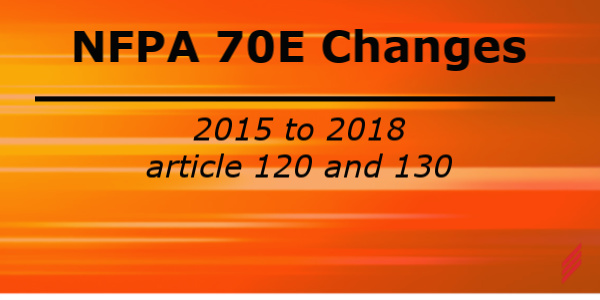
Brian Crosby is a Senior Electrical Engineer for Hallam-ICS who leads a team of engineers to provide arc flash assessments and electrical safety training for clients throughout the United States.Brian recently attended training that detailed the changes made in the 2018 version of NFPA 70E. For your convenience and quick reference, he has put together a series of blogs highlighting these changes.
- Blog 1 – Article 100 (Newly Added Definitions)
- Blog 2 – Articles 105 (Application of Safety-Related Work Practices and Procedures) and 110 (General Requirements)
- Blog 3 – Articles 120 (Establishing an Electrically Safe Work Condition) and 130 (Work Involving Electrical Hazards)
In my first blog, I covered the changes associated with Article 100. My second blog detailed the changes in Article 105 and 110. In my final blog, I will explain the changes made to Article 120 and Article 130.
- Establishing an Electrically Safe Work Condition (Article 120)
- 120.1 (Verify an electrically safe working condition)
- Article 120.1
- LO/TO Program
- General
- Employer Responsibilities
- Article 120.2
- General
- Article 120.4
- LO/TO Procedures
- Exception
- Not required for cord and plug connections
- Article 120.5
- Process for Establishing and Verifying an Electrically Safe Working Condition
- Exception 1
- Utilization of adequate permanently mounted test device now permitted
- Exception 2
- >1000V noncontact test instruments permitted
- Informational Note 2
- Additional info for design and rating requirements for voltage detectors
- Exception 1
- Process for Establishing and Verifying an Electrically Safe Working Condition
 The largest changes between the 2015 and 2018 versions of NFPA-70E is the lockout / tagout program. Essentially, it has been completely revamped. 2-1/2 pages of detailed definitions, program, principals, equipment, procedures and exceptions. Any similarities between the two versions begins at section 120.5 “Process for establishing and verifying an electrically safe working condition”. This section use to be 120.1 in the 2015 version. It starts with a general overview of a program then adds some information on the employer’s responsibility with things such as supplying equipment, training and auditing.
The largest changes between the 2015 and 2018 versions of NFPA-70E is the lockout / tagout program. Essentially, it has been completely revamped. 2-1/2 pages of detailed definitions, program, principals, equipment, procedures and exceptions. Any similarities between the two versions begins at section 120.5 “Process for establishing and verifying an electrically safe working condition”. This section use to be 120.1 in the 2015 version. It starts with a general overview of a program then adds some information on the employer’s responsibility with things such as supplying equipment, training and auditing.
120.2 “Lockout/tagout principles”
Article 120.2 continues with a bold general statement that electrical conductors and circuit parts shall not be considered to be in an electrically safe working condition until all of the requirements of Article 120 have been met. Although this general statement appears to mean that the entire section has changes (120.2), but in reality there are new exceptions in sections 120.4 and 120.5. The new exceptions added to 120.4 indicate that lockout/tagout is not required for work on a cord and plug connected equipment. What this means is unplug it before you work on it and make sure that the plug is under the control of the person working on the equipment so someone doesn’t walk by and plug it in.
Article 120.5 “Process for Establishing and Verifying an Electrically Safe Working Condition”
Article 120.5 was moved from 120.1 in 2015 to 120.5 in 2018. This section has added two new exceptions to the testing to verify absence of voltage.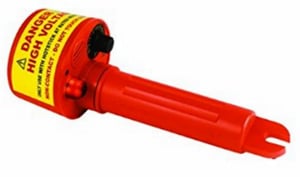 Exception 1 describes that a permanently installed tester can be used in place of a portable one but needs to meet certain requirements which also explained in the exception. The second exception allows a non-contact tester for equipment over 1000V. This make sense since no one should be touching or making contact with anything over 1000V.
Exception 1 describes that a permanently installed tester can be used in place of a portable one but needs to meet certain requirements which also explained in the exception. The second exception allows a non-contact tester for equipment over 1000V. This make sense since no one should be touching or making contact with anything over 1000V.
- Work Involving Electrical Hazards (Article 130)
- Article 130.4
- Additional protective measures
- Documentation
- Shock Protection Approach Boundaries Tables
- Article 130.4
- Article 130.5
- AF Risk Assessment
- General (AF Risk Assessment shall be performed)
- Estimate of Likelihood and Severity
- Additional Protective Measures
- Table 130.5(G) Selection of Arc-Rated Clothing and Other PPE
- Equipment Labeling
- Supervised Industrial Installations – Exception No. 2
- Article 130.7(E)(4)
- Cutting, Removing, or Rerouting of Conductors
130.4 “Additional protective measures”, “Documentation” and “Shock Protection Approach Boundaries Tables”
Article 130.4 was added to the Shock Risk Assessment section in the 2018 version. Additional protective measures is again referring to the hierarchy of risk control pyramid shown on the front cover. This section states that any additional protective measures shall follow in order of hierarchy of risk control: Elimination, Substitution, Engineering Controls, Awareness, Administrative Controls and PPE. Again, remember that Elimination should always be the first line of defense in placing equipment in a safe working condition. Documentation is a reminder that the results of the risk assessment shall be documented. The Shock Protection Approach Boundaries Tables were modified from the 2015 version. The information is the same but the table has a different format.
130.5 “Arc Flash Risk Assessment”
This section has revisions, and a good deal of new material added to it starting with the general overview. “An AF Risk Assessment shall be performed” to 1. Identify arc flash hazards, 2. estimate the likelihood of a hazard, and 3. find additional protective measures. The “Estimate of Likelihood and Severity” is new and explains that when you estimate the hazard, you should be considering things like the design of the equipment, its protective devices operating time, the condition of the equipment, and if it’s been maintained. “Additional Protective Measures” again talks about the hierarchy of risk control in the pyramid as mentioned above.
Table 130.5(G) “Selection of Arc-Rated Clothing and Other PPE”
When the incident energy Analysis Method is Used.” This table is new to this section but used to be in Annex H of the 2015 version. It’s good that they moved this table from the back of the book into this section where it belongs. Like the title says, this table is for selecting proper PPE and should only be used if an incident energy analysis is completed by an engineer and should not be used when using the table method.
130.5(H) “Equipment Labeling”
Exception No. 2 allows non-labeling of equipment per the requirements of 130.5(H)(1) thru 130.5(H)(3) for supervised industrial installations as long as the maintenance and engineering supervision personnel are qualified to monitor and service the equipment. The information however, does need to be documented in a manner that is readily available to persons likely to perform examination, servicing, maintenance and operation of the equipment while energized.
Article 130.7(E) (4) “Cutting, Removing, or Rerouting of Conductors”
The last change I’m going to talk about for new material in the 2018 version. This section basically talks about additional steps that shall be taken to verify absence of voltage when the conductor’s termination such as a junction or pull box are not in site.
All of this is information is valuable and aids in keeping safety in the work place. The next version of NFPA-70E will be the 2021 and should be available around October of 2020. This standard will continue to evolve and improve because we are always learning from the many different types of incidents and accidents that occur in our country.
About the author
Brian Crosby is the Arc Flash Safety Supervisor for all Hallam-ICS and runs our arc flash business out of our Raleigh, NC office. Brian has been with the company for over 15 years.
Read My Hallam Story
About Hallam-ICS
Hallam-ICS is an engineering and automation company that designs MEP systems for facilities and plants, engineers control and automation solutions, and ensures safety and regulatory compliance through arc flash studies, commissioning, and validation. Our offices are located in Massachusetts, Connecticut, New York, Vermont and North Carolina and our projects take us world-wide.
You May Also Like
These Related Stories
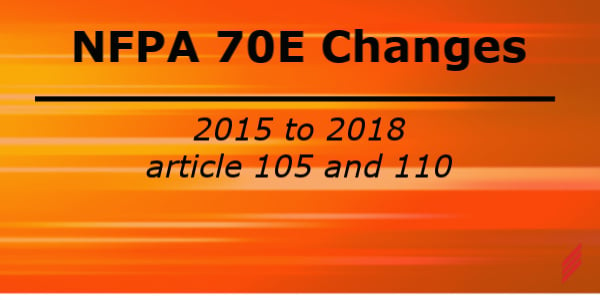
NFPA 70E Changes from 2015 to 2018 Standard for Electrical Safety in the Workplace – Article 105 and Article 110
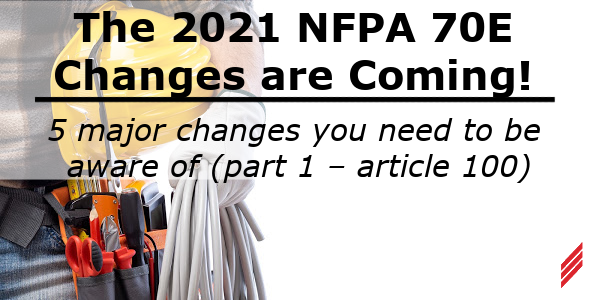
The 2021 NFPA 70E Changes are Coming! 5 Major Changes You Need to be Aware of (Part 1 – Article 100)
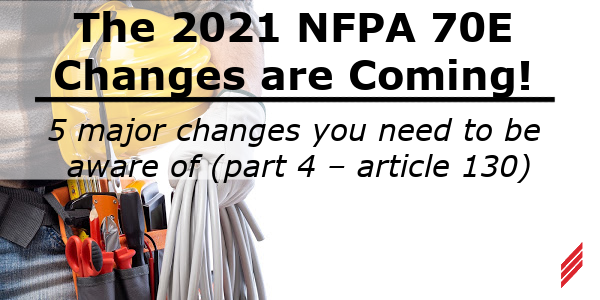


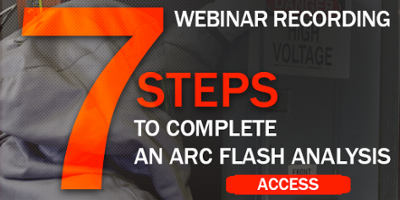

No Comments Yet
Let us know what you think